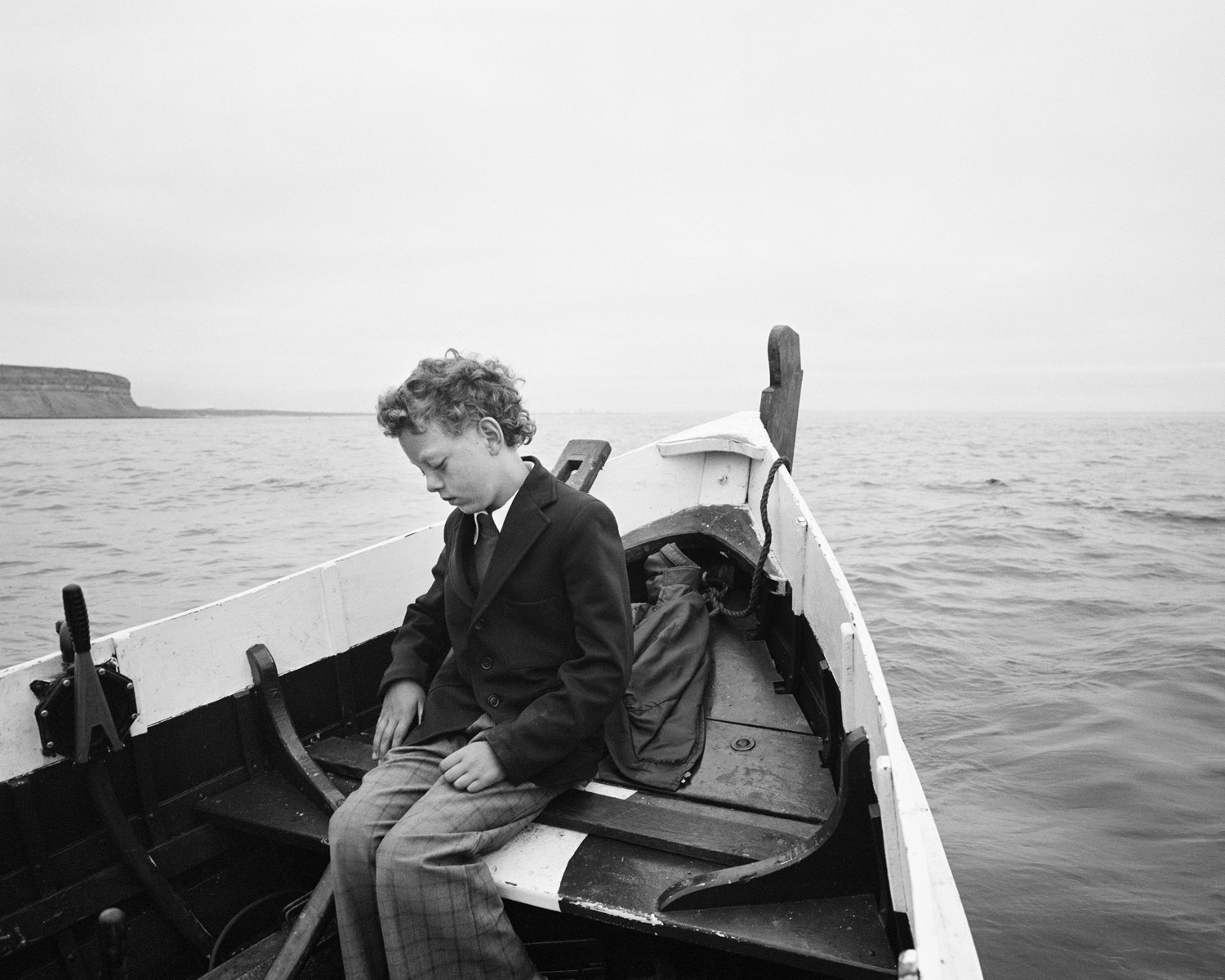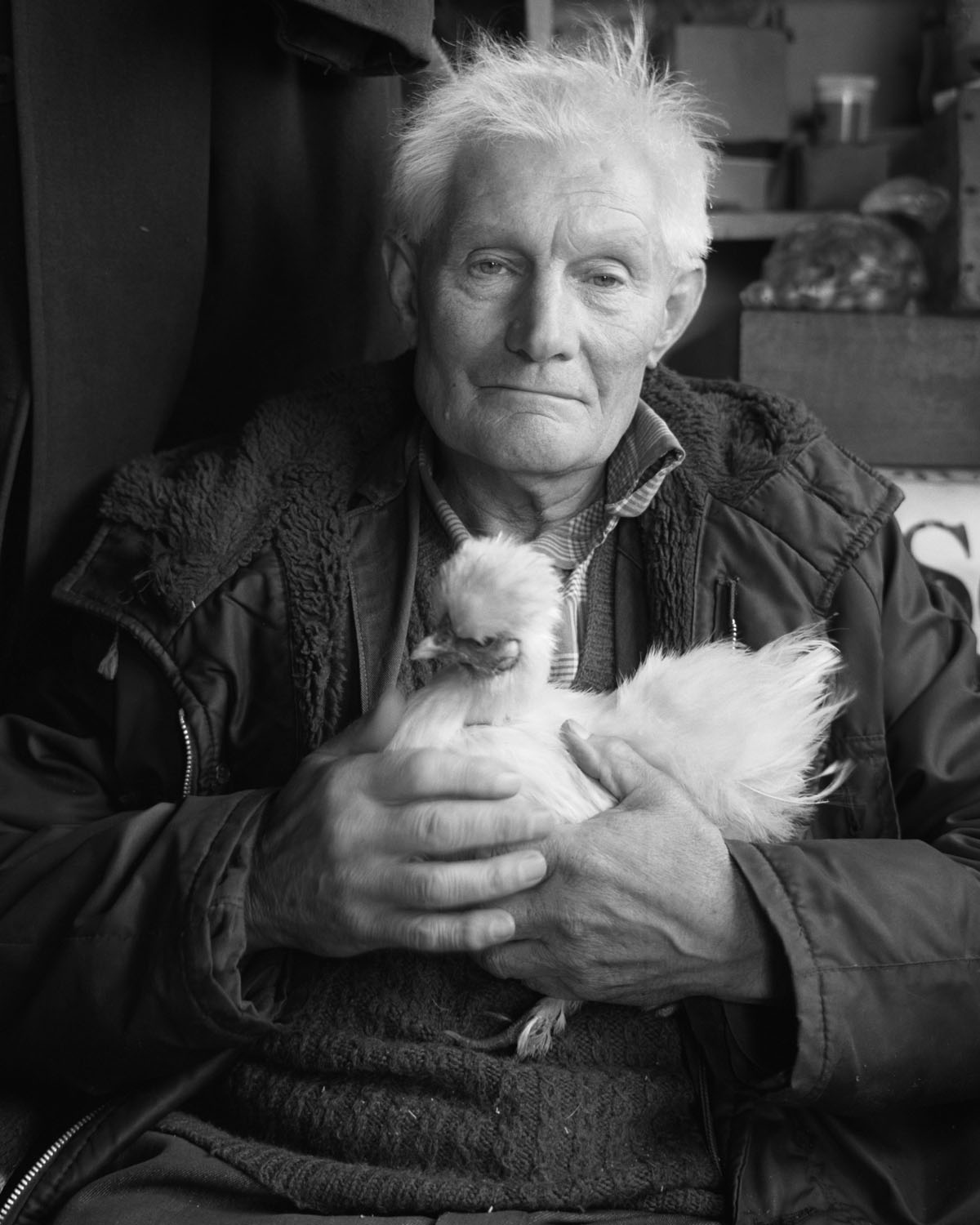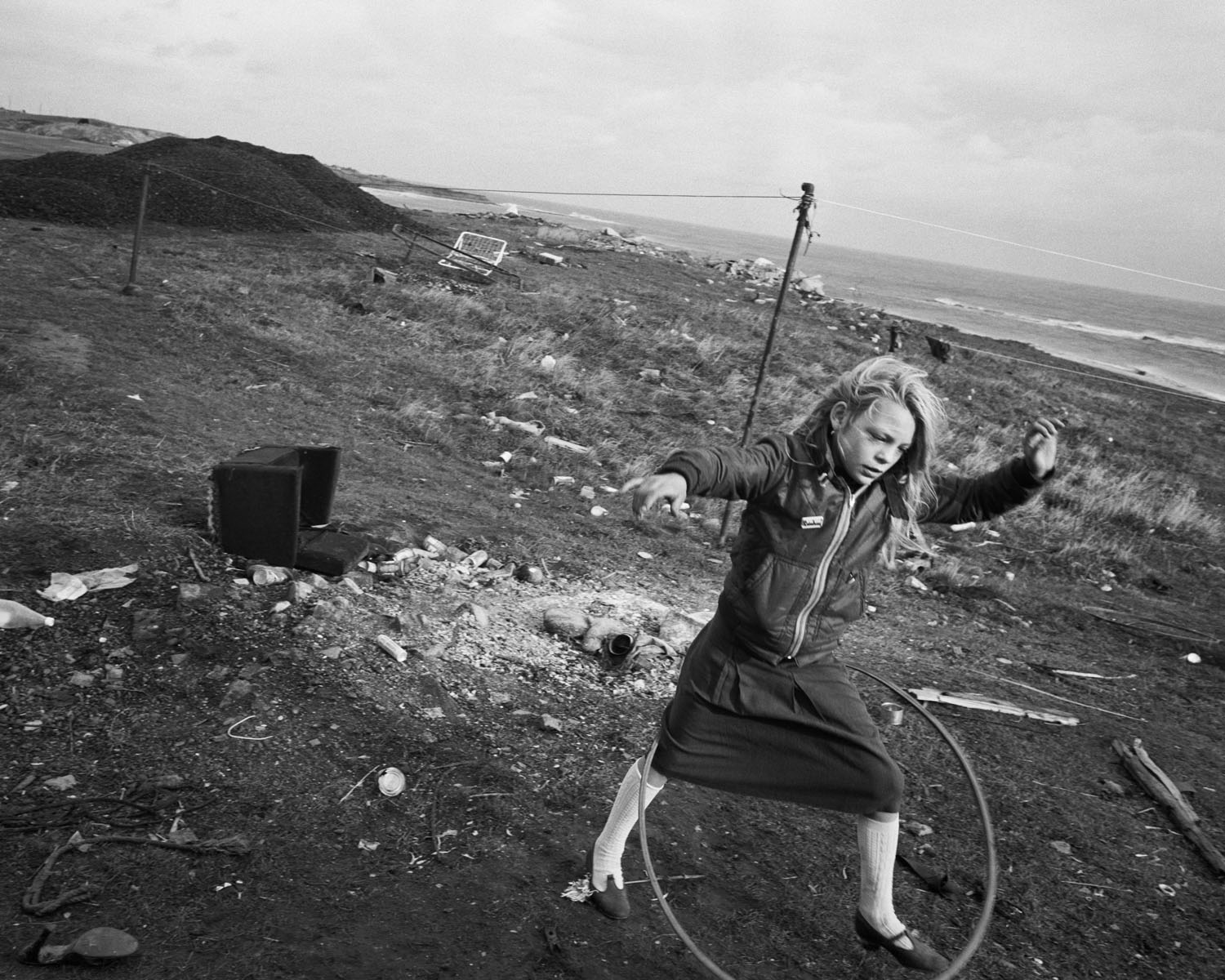Photographs that sing: In memory of Chris Killip, 1946-2020

Graeme Rigby writes a memorial piece about Chris Killip, who died recently. Above image of Chris ® Kent Rodzwicz
It was late 1982. My first paid gig as a writer was from Side Gallery, which Amber film and photography collective had set up in 1977. It was to write a text for Askam & Skinningrove, an exhibition by Chris Killip. The story goes that Chris had taken on running the gallery when Amber and first director Ron McCormick had parted company on collective and directorial approaches. Chris was only director for a year, but in 1982 was still closely involved in the development of documentary photography thinking that was shaping Side Gallery's approach.
In anybody's book, the group of photographers who had gathered around Side was extraordinary. Sirkka-Liisa Konttinen was a founder member of the collective. Graham Smith had joined during the group's 1974 River Project, out of which the plans for Side Gallery had grown. Chris had come to North East England in 1975 for the Northern Gas and Electric Photography Bursary, which Sirkka had had two years earlier.
Isabella Jedrzejczyk was a member of the early gallery team. When Tish Murtha came back to Tyneside from the Newport documentary course, Murray Martin, around whose vision Amber had gathered, sorted a Side Gallery / Manpower Services Commission community photographer scheme for her. There was Chris' partner Marketa Luskacova, landscape photographer John Davies, Teesside photographer Ian Macdonald.....
You can argue the toss as to whether it was a collaborative or competitive environment. It was both. It was incredibly fruitful and Chris played two important roles: along with all the others, his own extraordinary work helped to shape the debate, raise the stakes, and push ambitions forward. As a gallery advisor he helped bring in the historical and contemporary exhibitions that influenced the growing model - and models - of practice. As Sirkka-Liisa Konttinen has said, in those days, putting on an exhibition was the only practical way of actually seeing a lot of this work.
Chris was already networked in photography before he came to North East England. He knew more about the documentary photography tradition. It was Chris who had initiated Henri Cartier-Bresson and Martine Franck's residency at Side in 1978 (Franck was godmother to his and Marketa Luskacova's son, Matthew). As a start-as-you-mean-to-go-on moment for the young gallery, it's hard to beat.

Simon being taken to sea for the first time since his father drowned, Skinningrove, North Yorkshire, 1983: Photograph by Chris Killip
Chris had already produced his stunning Isle of Man photographs when he came to the North East. His initial work in the region has a fair geographical spread, but, one way or another, all of the photographers gathered around Side began to find their own specific territories. Looking at Martine Franck's work in the AmberSide Collection, you can see different photographers pointing her towards interesting possibilities in their own patches. Chris clearly had a role in suggesting she photograph the seacoalers at Lynemouth Beach and probably the grass-set slide on the brutalist estate at Killingworth.
Shipbuilding and coal were too big in the North East to be any one photographer's territory, but, living in Bill Quay on the South Bank of the Tyne, Chris can be seen 'covering' the narrative in Gateshead, Jarrow, Hebburn and South Shields.

Askam in Furness, 1982: Photograph by Chris Killip
He was attracted to an almost metaphorical sense of the edge. Askam and Skinningrove are both communities where you feel you are beyond things: Skinningrove at the bottom of a steep road; Askam built on the sands of Furness. If the North itself was a 'here-be-dragons' extremity of England, Askam and Skinningrove were as far as you could go west and east, respectively.

Askam in Furness, 1982: Photograph by Chris Killip
The seacoaling community of Lynemouth Beach in Northumberland was another edgeland. It tended to assume photographers were from the DHSS – or at least providing potential evidence of benefit fraud. It was hard to get access (Franck's shot was taken at a respectful distance). Around 1983 Amber had given a commission to a young Ashington photographer Mik Critchlow. His uncle, Trevor Critchlow, was one of the key community leaders on the site. Amber bought a caravan there. During the week Chris used it; at weekends Amber researched its first major drama there. It provided fertile ground for the bleak and intimate beauty of Chris' Seacoal.

Rocker and Rosie going home, Lynemouth, Northumberland, 1984: Photograph by Chris Killip

Brian at the Fence, Lynemouth, Northumberland, 1983: Photograph by Chris Killip
And then there were the photographs of the Gateshead Music Collective venue, The Station – an energy from the edge back in the heart of Tyneside: not punk from headline-grabbing 1976, but nearly ten years on, bloody-mindedly still keeping the flame alive.

Youth on a wall, Jarrow, Tyneside, 1976: Photograph by Chris Killip
I'm not sure whether Chris himself had actually wanted a text for Askam & Skinningrove. Murray Martin was interested in exploring writing as a way of opening up documentary narratives in the gallery context. I sat down on the floor in Chris' flat as he showed me work prints and talked, at first guardedly, about what he had been doing. In the end, he was in fact very generous in pointing me towards the good storytellers in the two communities. It's the easiest writing gig in the world, following in after a documentary photographer has opened up a relationship of trust. You get gold dust.
So it was a very important commission for me, setting me off on a particular journey. But documentary photography is perhaps the artform most focused on an individuality of the eye. In his book In Flagrante, Chris says 'The photographs tell you more about me than about what they describe'. I'm not sure I agree with that. Documentary photographers don't always know the extent of what their photographs reveal. The subjects themselves sometimes only come to a sense of this many years later. There is a richness and possibility in the best work that is beyond the limitations of individual vision. And Chris' work is among the best: they are photographs that sing. Chris was a documentary photographer of breathtaking intensity, skill and understanding.

Helen and her hula-hoop, Lynemouth, Northumberland, 1984: Photograph by Chris Killip
Thanks to Matthew Killip and the Martin Parr Foundation for permission to publish the photographs.

Graeme Rigby
Graeme Rigby wrote a number of Side Gallery texts in the 1980s & 90s. He was a member of Amber film & photography collective from 1999 to 2018 and is currently chair of AmberSide Trust.
